- MAREŠOVÁ, Pavlína. Modern procedures in gynaecology and obstetrics. 3rd, revised and supplemented edition. Prague: ISBN 978-80-7345-709-9.
- ROZTOČIL, Aleš. Modern obstetrics. 2nd, revised and supplemented edition. Prague: Institute for Mother and Child Care.
- pubmed.ncbi.nlm.nih.gov - Diastasis of the direct abdominal muscle. Javed Akram, Steen Henrik Matzen
- pregnancybirthbaby.org.au - Separation of the abdominal muscles diastasis recti. Pregnancy childbirth
- healthline.com - Diastasis recti: What is it and how is it treated? Jane Chertoff
Postpartum diastasis: cause and symptoms? + Exercises at home
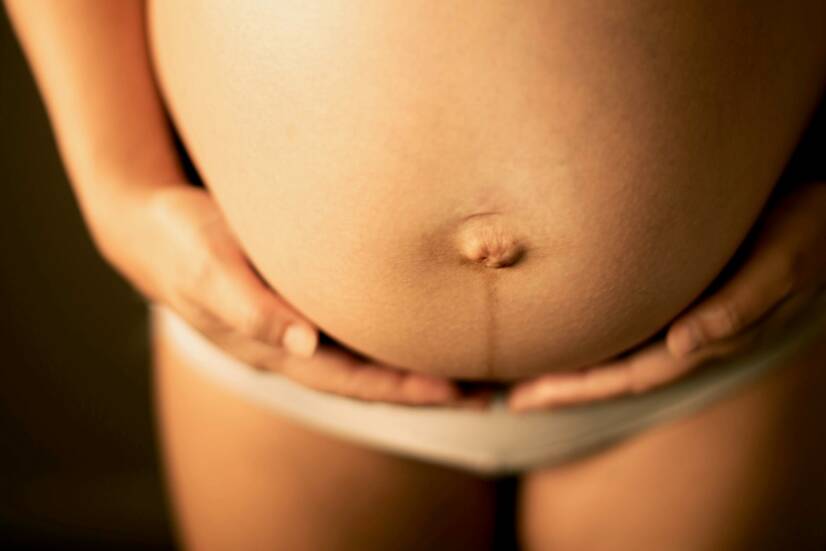
Pregnancy is a physically and mentally challenging time in a woman's life. One of the most common physical side effects of pregnancy is postpartum abdominal muscle separation. How does abdominal muscle diastasis arise in pregnancy and what treatment options are available?
Characteristics
Abdominal diastasis means the deviation of the rectus abdominis muscle from its tendon in the midline, technically called the linea alba.
This ligamentous line connects the right and left parts of the musculus rectus abdominis (rectus abdominis muscle). The function of the abdominal wall is thus impaired.
The abdominal musculature primarily provides protection and cover for the internal organs. At the same time, the abdominal musculature is part of the deep stabilisation system of the body.
Untreated diastasis can cause back pain, pelvic pain, digestive and urogynecological problems over time.
The most common reason for the development of diastasis is just a woman's pregnancy.
Other causes of its occurrence can be an excessively weakened hypotonic abdominal wall, excessive overloading and damage to the abdominal muscles, mechanical damage or trauma.
Type of abdominal diastasis
Abdominal diastasis can have different variations with respect to the permit. In most cases, it is a bifurcation of the muscles in the umbilicus area.
However, the stretching of the rectus abdominis muscles can also be in the upper region or along the midline of the abdomen. The upper type of diastasis is usually easier to return to its original state.
Diastasis usually remains widest in the lower part of the umbilicus and returns to its original state last.
Worse, but not as common, is the case where the midline of the linea alba is completely severed.
The abdominal cavity remains at this point covered only by the peritoneum, fascia (the connective tissue covering the muscles), subcutaneous fat and skin. Often the woman is able to palpate the internal organs.
Often this phenomenon is accompanied by other symptoms such as an umbilical hernia, pelvic floor clearing or prolapse of the pelvic organs.
However, this is already a serious condition that requires precise treatment, consideration of surgery and, last but not least, professional physiotherapy.
Causes
As a result of the development of the baby inside the uterus and the influence of hormonal changes, the walls of the uterus enlarge and the soft structures of the abdomen expand.
As a result of growth and intra-abdominal pressure during pregnancy, the left side of the abdominal musculature becomes spaced apart from the right. The linea alba can stretch along its entire length and at the same time become thinner.
During pregnancy, this is a natural physiological phenomenon, as the growing uterus must create space in the abdominal cavity for the developing baby.
Abdominal diastasis commonly occurs in pregnant women in the third trimester in association with the growing uterus and subsequently in the postpartum period.
After childbirth, the abdominal wall should gradually return to its original state with the help of hormonal influences, appropriate lifestyle and rehabilitation. However, if the muscle tissue is excessively weakened and lacks elasticity, this may not happen.
Some studies suggest that approximately half of women fail to spontaneously close the gap and need to address the subsequent dysfunction of the relaxed abdominal wall.
If the distance of abdominal muscle laxity from the medial ligament is 1.5 cm (2 fingers) or more, this is a diagnosis of diastasis of the abdominal muscles.
Symptoms
The most common physical manifestations of postpartum diastasis:
- Loose abdominal wall
- Back and pelvicpain
- Loose abdominal overhang in the navel area
- Impaired mobility and stability of the trunk
- Weakened pelvic floor musculature
- Problems with the digestive tract
- Urinary incontinence (urine leakage)
- Disruption of the menstrual cycle
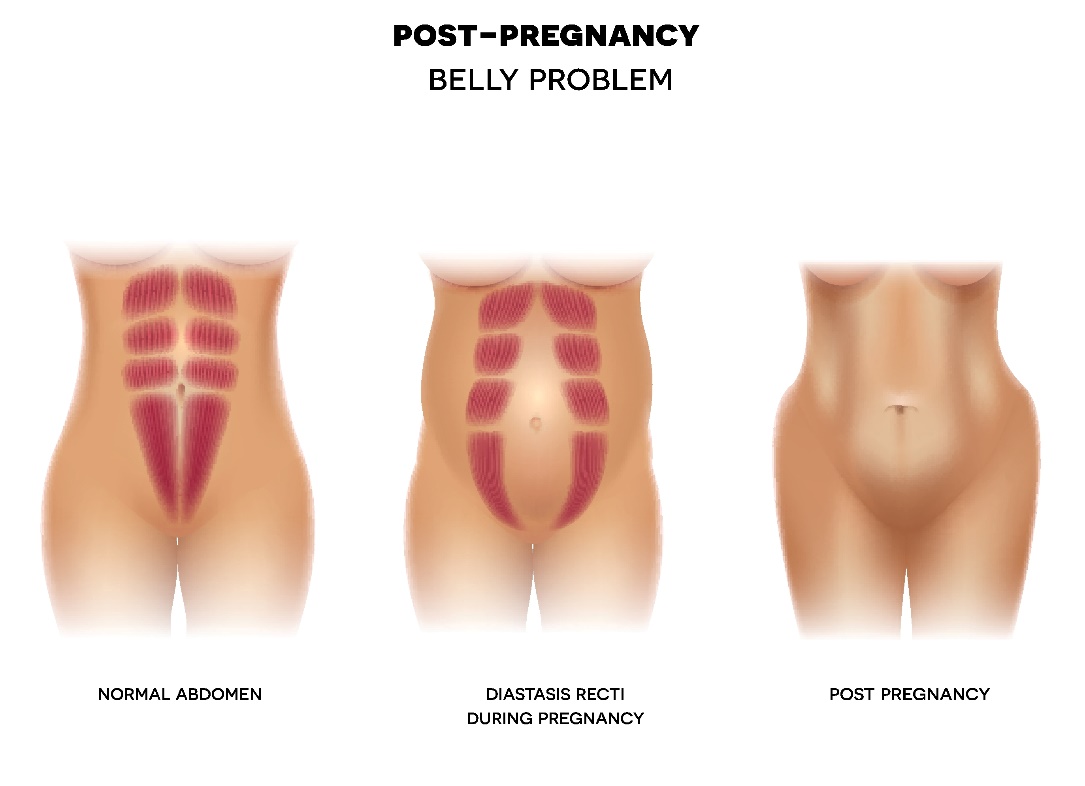
Diagnostics
Home diagnosis using the bellies of the own fingers is performed in the supine position. Using the bellies of the fingers of the dominant hand, the woman palpates the width of the abdominal muscle from the centre of the abdomen (umbilicus line).
If this gap is 2 cm or more (as small as 1.5 cm in some literature), diastasis of the abdominal wall is probably present.
The second indicator is the presence of an abdominal diastasis in the umbilicus. The diastasis can be seen if the woman lies on her back and raises her lower limbs slightly off the ground. If there is a bump above or below the umbilicus, this again indicates the possibility of abdominal diastasis.
A specialist examination by a doctor is always necessary to confirm or refute the diagnosis.
The doctor uses fascial and palpation methods (by sight and touch) to diagnose. Ultrasound, computed tomography or magnetic resonance imaging are used as objective diagnostic methods to view the soft structures of the body in detail.
The appropriate type of diagnostic procedure is determined by the examining physician.
Options for the prevention of diastasis
Prevention of abdominal diastasis in pregnancy and in the postpartum period consists primarily in keeping the abdominal wall stable and elastic before the baby is conceived.
An appropriate lifestyle and physical activity before delivery improve the quality and speed of postpartum recovery.
Within the period of pregnancy itself, it is possible to use the services of physiotherapy in gynaecology, where specific exercises will be recommended to the woman to correct the imbalance of the musculoskeletal system, taking into account her individual state of health.
Exercise at home - prevention and therapy of diastasis after childbirth
Ideally, the choice of exercises should be consulted with a specialist, taking into account the individual state of health. Below are suitable examples of exercises to strengthen the abdominal wall and eliminate imbalances of the pelvic muscles.
Exercise 1: Defensive breathing and abdominal wall strengthening
The following exercise may seem simple at first glance, but this is not always the case. The woman's starting position is lying on her back on a soft comfortable mat.
The legs are bent at the knee joints and the feet are resting flat on the mat. The head is straight in an imaginary extension of the spine and the arms, lowered freely from the ears, rest on the mat.
There must be no space between the mat and the spine.
Place the open palms on the last ribs from the side - on the outside of the lower abdomen. The palms serve as a check for correct exercise technique.
For a better perception of one's own breathing and the movement of the hands, it is recommended to close the eyes during the exercise. With breathing into the diaphragm and abdomen, the woman tries to spread the ribs sideways, creating an imaginary tire growing sideways around the abdomen.
The palms of the hands are used to control the diaphragmatic breathing technique. The chest moves minimally during the exercise.
Inhaling using and maintaining intra-abdominal pressure, we hold and exhale for a few seconds.
With the exhalation, we then relax the abdominal wall and return to the original position.
Do not hold the breath during the exercise.
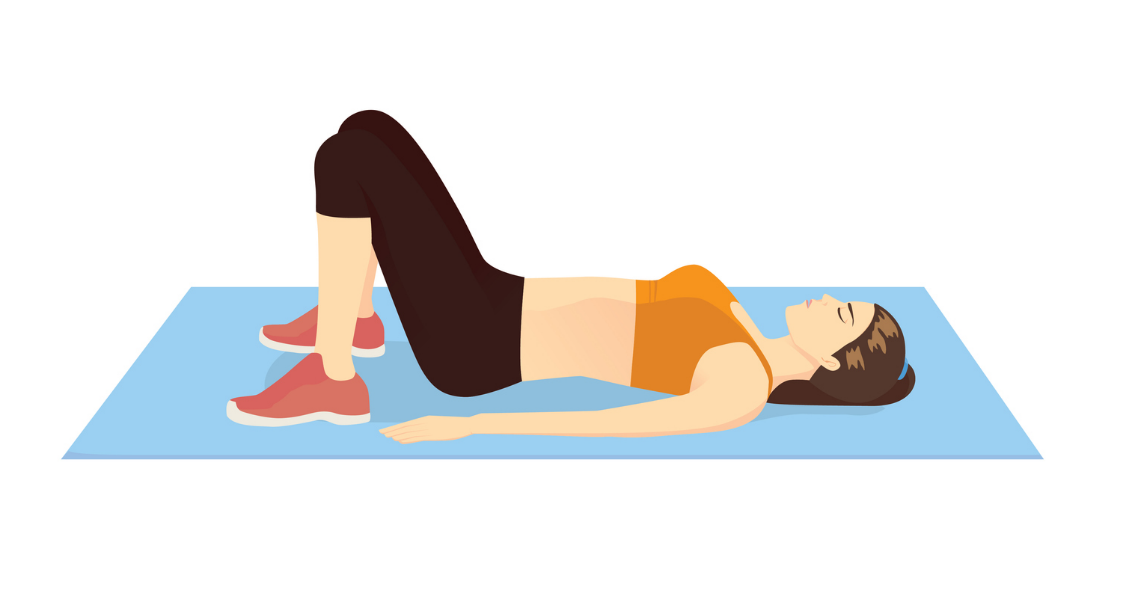
Exercise 2: Bridge with abdominal wall and pelvic floor activation
The knee joints are bent, the shoulder blades are flat on the mat. There is no space between the spine and the mat. The knee joints are level with the width of the hip joints. The arms are loosely placed close to the body, palms down.
During the exercise, the pelvis gradually rises up towards the ceiling. The shoulder blades remain supported throughout the exercise. In the upper bridge position, the pelvic floor muscles are activated and the gluteal halves contract.
In the upper position, hold and firm the abdominal wall several times using the diaphragm. With an exhalation, the practitioner lowers the mat again and releases all the activated muscles of the body.
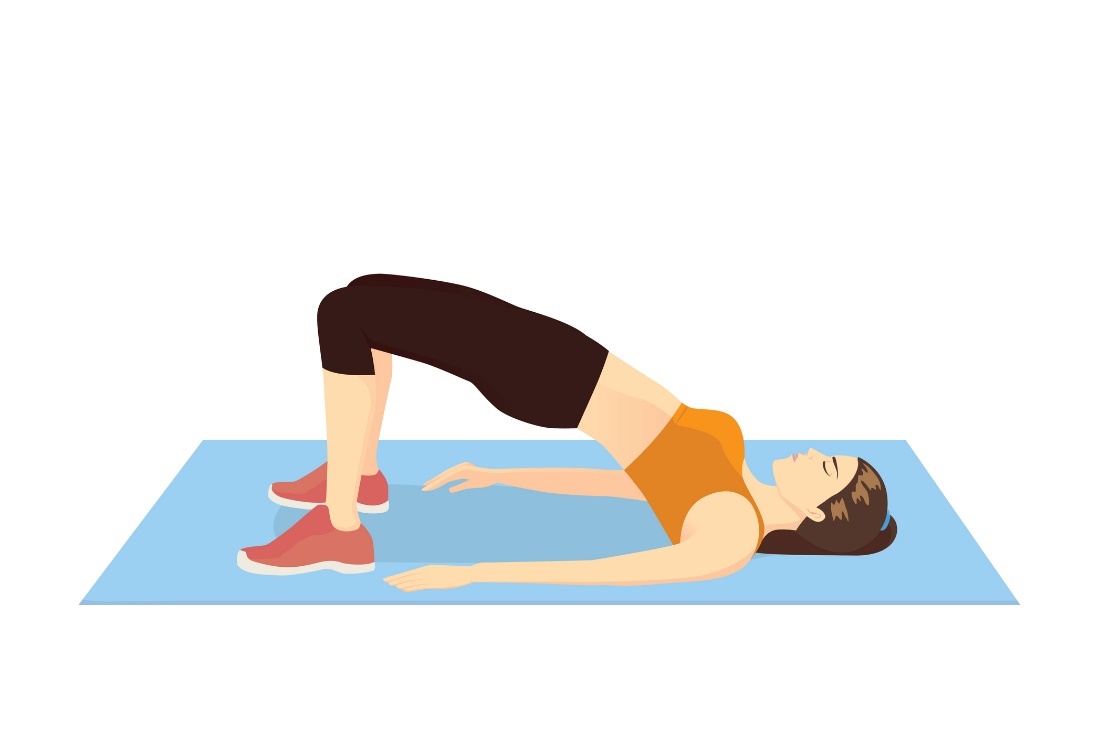
Exercise 3: Alternating leg bends and abdominal stabilization
The starting position of the exercise is lying on the back. The head is in extension of the spine, the arms lowered from the ears loosely placed on the mat. The lower limbs are raised upwards so that the feet and knees do not touch the mat.
The lower limbs are ideally in the air, naturally bent at the knee joints to a right angle. The hip joints form an imaginary right angle with the abdomen. Again, there must be no space between the mat and the spine.
With the inhalation we activate the lateral diaphragmatic breathing, regulate the intra-abdominal pressure and strengthen the entire abdominal wall.
Alternately, we slowly place one lower limb with the heel on the mat and then smoothly return it to the second sleep again in the air.
Repeat the exercise while moving the opposite lower limb.
Pay attention to the space between the mat and the spine and to the swing speed of the exercise.
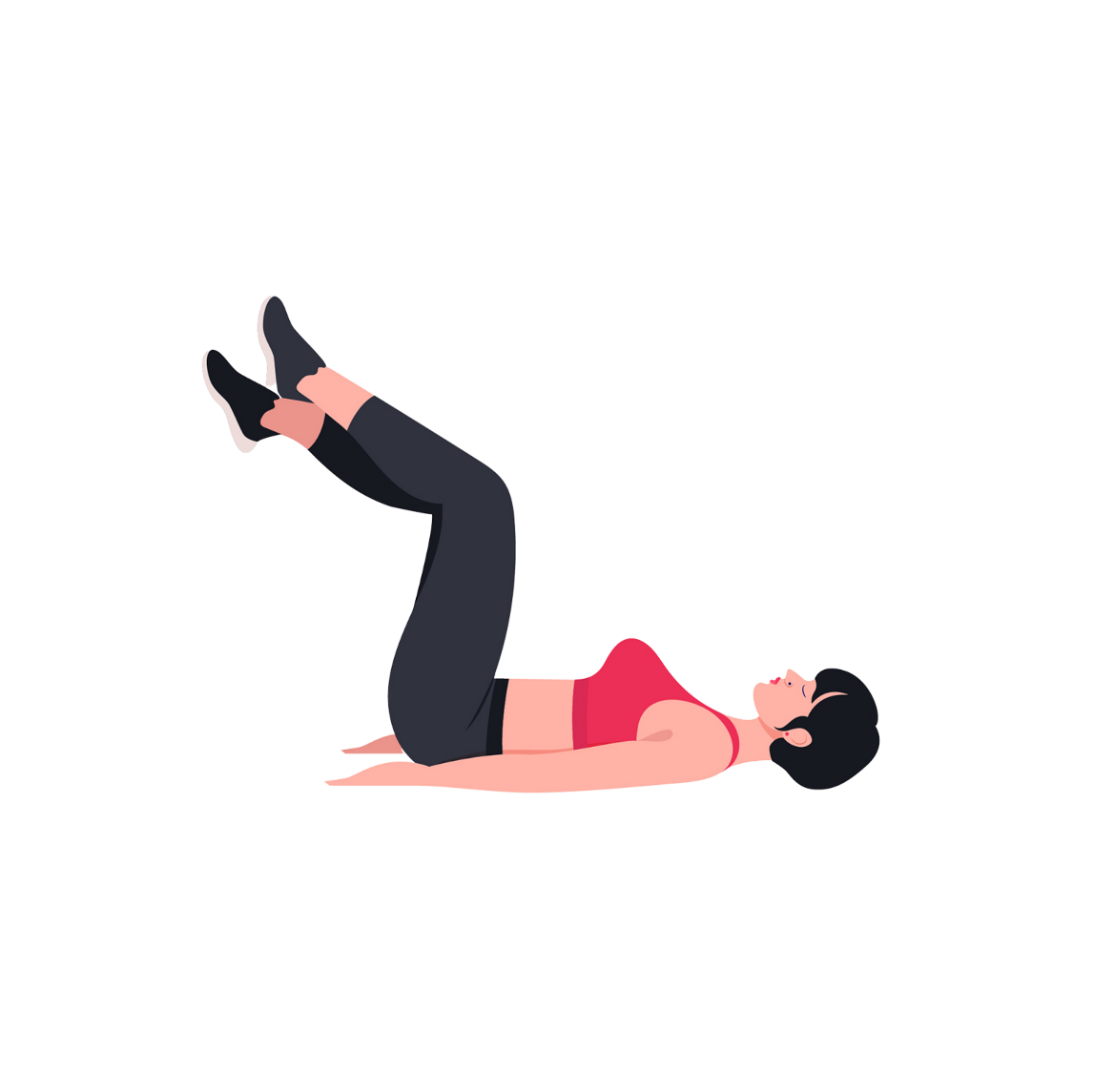
Exercise 4: Plank/half plank and mid-body activation
The position consists of leaning on the forearms and knee joints (feet for the heavier version). The spine is imaginatively straight as a plank and the head in natural extension. The exerciser looks down or in front of him/her and does not tilt the head.
Pay attention to the shoulders. They are pulled away from the ears and do not fall towards the head.
During the exercise, the abdominal wall is strengthened and diaphragmatic breathing is activated. Do not hold the breath. This is a time endurance exercise.
Beware of possible relaxation of the abdominal muscles.
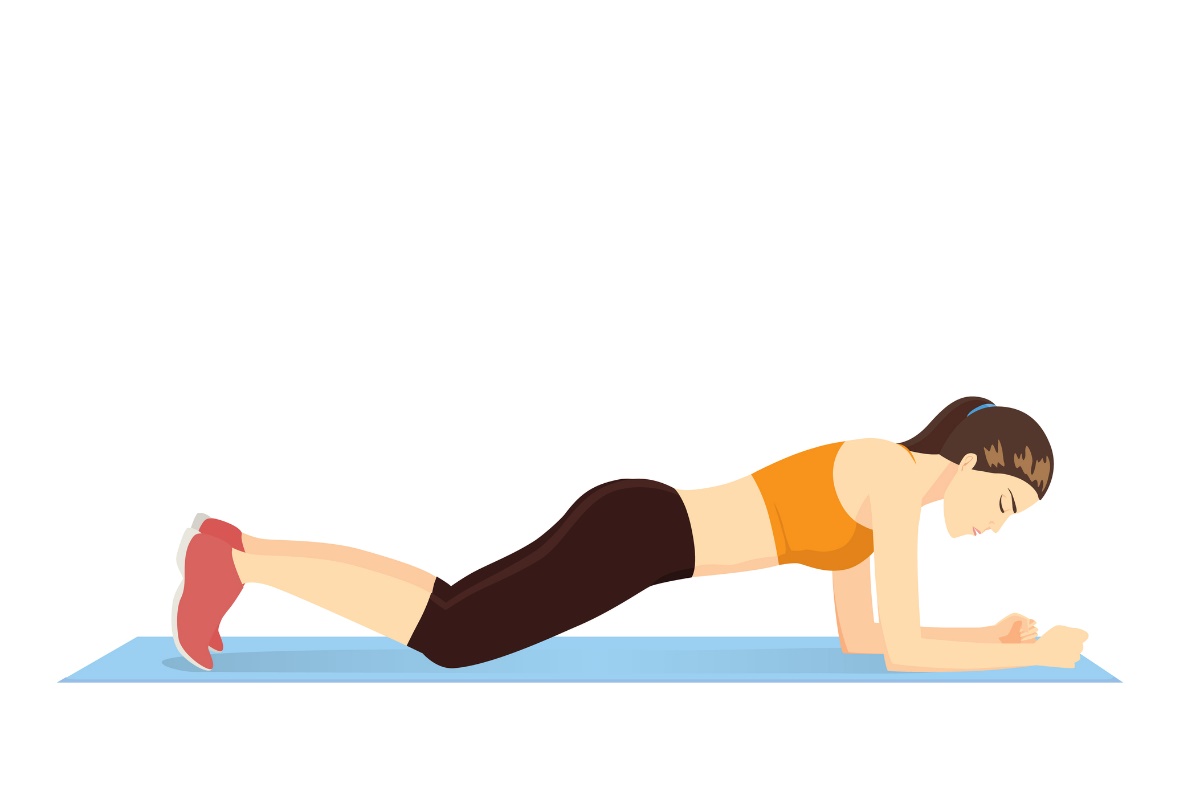
The most common possible mistakes in home exercises:
- Fast swinging movement
- Failure to activate diaphragmatic breathing
- Not strengthening the abdominal muscles and walls
- Loose space between the mat and the spine
- Holding the breath during exercise
- Not being aware of muscle activation
- Irregularity of exercise
- Distraction
How it is treated: Postpartum diastasis
Treatment options for postpartum abdominal diastasis
Show morePostpartum diastasis is treated by
Other names
Interesting resources










